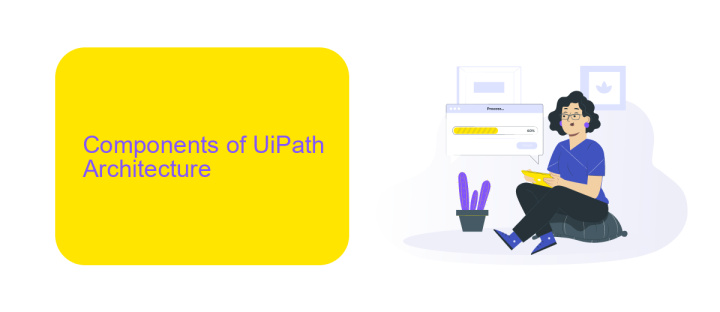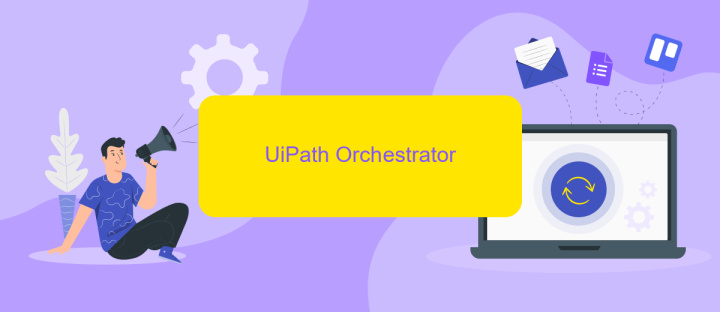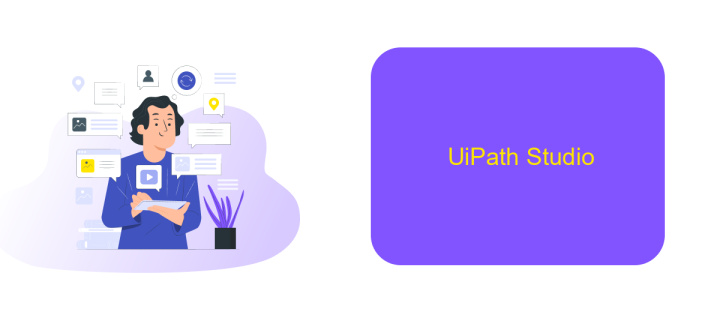What is the Architecture of UiPath?
UiPath is a leading Robotic Process Automation (RPA) platform that streamlines business processes through automation. Its architecture is designed to be scalable, flexible, and user-friendly, enabling organizations to efficiently implement and manage automation workflows. This article delves into the core components of UiPath's architecture, exploring how they work together to deliver robust automation solutions.
Introduction
UiPath is a leading Robotic Process Automation (RPA) platform designed to automate repetitive tasks and streamline business processes. By leveraging advanced automation capabilities, UiPath enables organizations to enhance efficiency and reduce operational costs. Understanding the architecture of UiPath is crucial for effectively implementing and managing automation projects.
- UiPath Studio: A powerful development environment for designing automation workflows.
- UiPath Orchestrator: A centralized platform for managing, monitoring, and controlling automated tasks.
- UiPath Robots: Software robots that execute the automation tasks designed in UiPath Studio.
- ApiX-Drive: An integration service that facilitates seamless connectivity between UiPath and other applications, enhancing the automation capabilities.
The architecture of UiPath is designed to be scalable and flexible, allowing businesses to customize and expand their automation solutions as needed. By integrating with services like ApiX-Drive, organizations can easily connect UiPath with various third-party applications, ensuring a smooth and efficient automation process. This robust architecture empowers companies to achieve greater productivity and operational excellence.
Components of UiPath Architecture

UiPath architecture comprises several key components that work together to provide a robust automation platform. The primary components include UiPath Studio, UiPath Robot, and UiPath Orchestrator. UiPath Studio is a development environment where users can design automation workflows using a drag-and-drop interface. UiPath Robot executes the workflows created in UiPath Studio, either attended (with human interaction) or unattended (without human interaction). UiPath Orchestrator acts as a centralized platform for managing, scheduling, and monitoring the robots and their activities, ensuring seamless execution and scalability of automation processes.
Integration capabilities are crucial for UiPath, and services like ApiX-Drive play a significant role in this aspect. ApiX-Drive facilitates the integration of UiPath with various third-party applications and services, enabling seamless data flow and process automation across different platforms. By using ApiX-Drive, organizations can easily set up integrations without extensive coding, ensuring that their automation workflows are comprehensive and interconnected. This enhances the overall efficiency and effectiveness of the automation solutions provided by UiPath.
UiPath Orchestrator

UiPath Orchestrator is a web-based application that enables you to orchestrate your UiPath Robots in executing repetitive business processes. It provides centralized management, ensuring that you can deploy, manage, and monitor your automation processes efficiently. Orchestrator is essential for scaling your automation efforts and maintaining control over your robotic workforce.
- Provisioning: Allocate and manage robots, ensuring they have the necessary permissions and configurations.
- Deployment: Distribute automation processes to specific robots or groups of robots.
- Monitoring: Track the performance and status of your robots and processes in real-time.
- Logging: Collect detailed logs from robots to help diagnose issues and improve processes.
- Integration: Use services like ApiX-Drive to integrate Orchestrator with other business applications seamlessly.
By leveraging UiPath Orchestrator, organizations can achieve higher efficiency and reliability in their automation initiatives. The integration capabilities, particularly with services like ApiX-Drive, allow for seamless connectivity with various business applications, enhancing overall workflow automation. This ensures that your automation processes are not only robust but also adaptable to changing business needs.
UiPath Studio

UiPath Studio is a powerful tool designed for automating repetitive tasks by creating software robots. It offers a user-friendly interface that allows both technical and non-technical users to build automation workflows through drag-and-drop functionality. The platform supports a wide range of activities, including data extraction, manipulation, and integration with various applications.
One of the standout features of UiPath Studio is its ability to integrate seamlessly with third-party applications and services. This is particularly useful for businesses looking to streamline their operations by connecting different systems. For instance, ApiX-Drive is a service that facilitates the integration of UiPath with other software, enabling automated data transfers and real-time updates.
- Drag-and-drop workflow designer
- Extensive library of pre-built activities
- Seamless integration with third-party applications
- Support for both attended and unattended automation
- Advanced debugging and error handling capabilities
In conclusion, UiPath Studio empowers organizations to automate complex processes efficiently. Its integration capabilities, especially through services like ApiX-Drive, make it a versatile tool for enhancing productivity and operational efficiency. Whether you're a developer or a business analyst, UiPath Studio offers the features and flexibility needed to drive digital transformation.
UiPath Robot
UiPath Robot is a crucial component of the UiPath platform, designed to execute the tasks defined in automation workflows. These robots can operate in both attended and unattended modes, enabling seamless interaction with applications to perform repetitive tasks. Attended robots work alongside human operators, providing assistance and increasing productivity, while unattended robots operate independently, executing tasks without human intervention. This dual capability ensures flexibility and efficiency in automating various business processes.
To enhance integration capabilities, UiPath Robots can be configured to work with external services like ApiX-Drive. ApiX-Drive facilitates the connection between UiPath and numerous third-party applications, ensuring smooth data transfer and process automation. By leveraging ApiX-Drive, organizations can set up integrations without extensive coding, allowing for real-time synchronization and improved workflow management. This integration capability significantly expands the functionality of UiPath Robots, making them an indispensable tool in modern automation strategies.
FAQ
What are the main components of UiPath Architecture?
How does UiPath Studio interact with UiPath Robot?
What is the role of UiPath Orchestrator in the architecture?
How do you integrate UiPath with other systems?
What are the deployment options for UiPath Orchestrator?
Apix-Drive is a simple and efficient system connector that will help you automate routine tasks and optimize business processes. You can save time and money, direct these resources to more important purposes. Test ApiX-Drive and make sure that this tool will relieve your employees and after 5 minutes of settings your business will start working faster.

